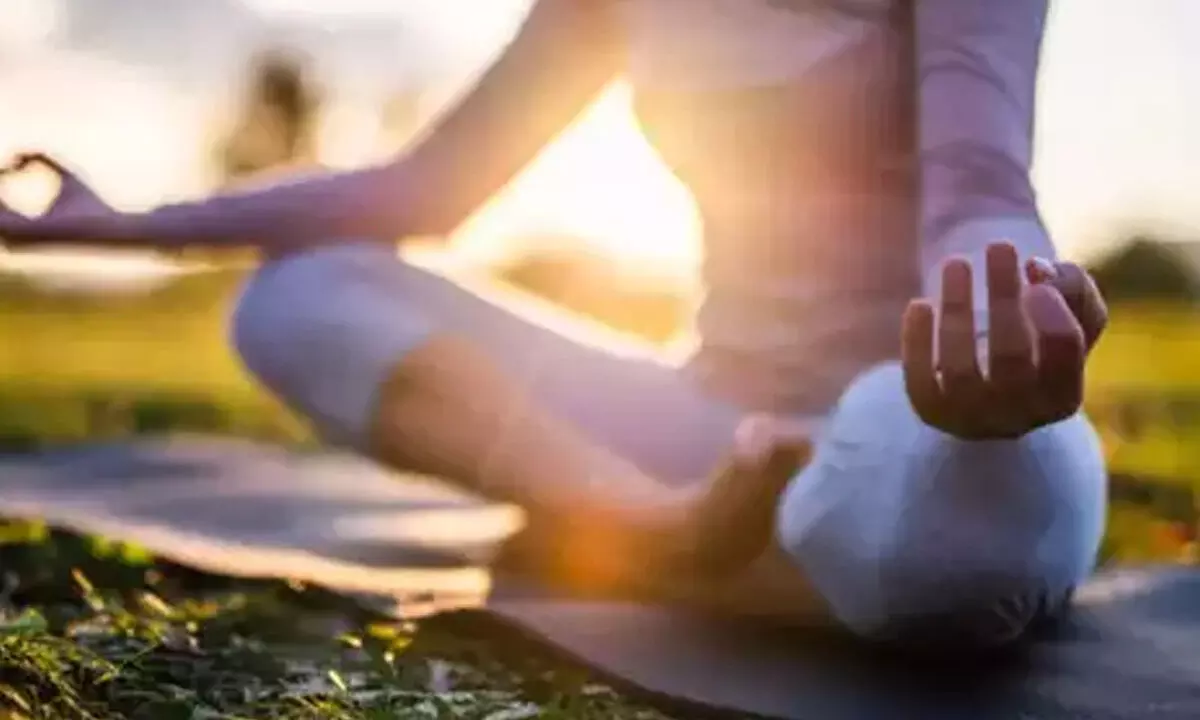Yoga exercises to tackle anxiety and nurture mental health in New Year 2024

Yoga significantly contributes to mental well-being, making it a perfect choice for starting the New year with it.
Yoga significantly contributes to mental well-being, making it a perfect choice for starting the New year with it. The link between yoga and mental health is grounded in its profound impact on both the mind and body. Using physical postures, controlled breathing, and meditation, yoga provides a comprehensive approach to achieving and sustaining mental well-being.
Combining physical postures, controlled breathing, and meditation, yoga offers a holistic approach accessible to people of all ages and backgrounds. By integrating yoga into our lives, we proactively nurture mental well-being, creating a more resilient and balanced self.
Here are some simple yoga exercises that can help tackle anxiety and nurture mental health as we step into the New Year.
Healing walk
Healing walk is a special type of body dynamics wherein we form a structure and then use the structure to walk. Whether a person is suffering from physical issues, emotional, mental, or spiritual, healing walk takes care of all these different aspects of one's being.
Leave a minimum of 30 minutes gap after your meal to practice this it is advisable to practice this on an empty stomach if possible.
To perform healing walk, first you can use any flat surface . This could be in a park, on the terrace or anywhere that is convenient for you. But it is advisable that it be done on an even surface.
Lift your arms up keeping them at shoulder width distance. Now, start walking with your arms raised in this position and your hands can be up in the air for 1-3 minutes. Initially this may not be possible as you will have to train the muscles of your arms and shoulders and strengthen them. Build up to 1-3 minutes gradually by starting of with a minute increase and so on until you are physically capable enough with the strength required to hold your arms up for 1-3 minutes straight. One round practice will require you to perform a minimum of three sets of these walks of minimum 1-3 minutes each.
Benefits of Healing walk
There are many benefits to healing walk and these include solving issues of anxiety, and depression
Healing walk reduces the occurrence of headaches and migrains by reducing stress and coming the mind
Practicing healing walk regularly improves your overall well being by managing blood pressure levels
It acts as a stress reliever.
Breathing exercises (Pranayama):
Start with simple deep breathing exercises. Inhale deeply through your nose, allowing your lungs to fill with air, then exhale slowly through your mouth. This helps activate the body's relaxation response, calming the nervous system.
Yoga asanas
Child’s Pose (Balasana):
Kneel on the mat, sit back on your heels, and then fold forward, reaching your arms out in front of you. This pose gently stretches the back, hips, and thighs, promoting a sense of calm and surrender.
Downward-Facing Dog (Adho Mukha Svanasana):
From a hands-and-knees position, lift your hips toward the ceiling, straightening your legs and arms. This pose helps relieve tension in the shoulders and back, while also energizing the body.
Warrior II (Virabhadrasana II):
Step one foot back, keeping the front knee bent at a 90-degree angle. Extend your arms parallel to the floor. This grounding pose fosters strength and stability, empowering you both mentally and physically.
Corpse Pose (Savasana):
Lie down on your back, arms by your sides, palms facing up. Close your eyes and focus on your breath. Savasana is a vital relaxation pose that allows the body and mind to absorb the benefits of your practice.
Seated Forward Bend (Paschimottanasana):
Sit with your legs extended in front of you, hinge at your hips, and reach for your toes. This forward bend helps calm the mind, alleviate stress, and stretches the spine and hamstrings.
Legs Up the Wall (Viparita Karani):
Sit close to a wall, lie on your back, and extend your legs up the wall. This gentle inversion promotes relaxation, reduces anxiety, and can help with insomnia.
Bridge Pose (Setu Bandhasana):
Lie on your back, bend your knees, and lift your hips toward the ceiling. Bridge pose opens the chest, strengthens the legs, and stimulates the nervous system, promoting emotional well-being.
Tree Pose (Vrikshasana):
Stand on one leg, bring the sole of the other foot to the inner thigh or calf, and balance. This pose enhances concentration, stability, and mental clarity.
Meditation:
Incorporate a short-guided meditation into your routine. Focus on your breath or use visualization techniques to calm the mind and cultivate a positive mental space.
As you practice these yoga exercises regularly, remember to listen to your body and progress at your own pace. Consistency is key, and over time, you may notice a significant positive impact on your mental well-being. Here is to a balanced and peaceful New Year!
(The writer is a founder of Akshar Yoga Kendraa, and Yoga and Spiritual Leader)

